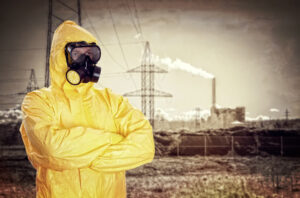BIRD DROPPINGS A SERIOUS ILLNESS THREAT TO SUBSTATION CREWS
Damaged equipment isn’t the worst part ...

There’s an insidious problem plaguing substations across North America: bird droppings. Utilities sometimes seek to prevent birds from entering substations to protect expensive equipment. But there’s a hidden threat that doesn’t get nearly enough attention: the significant health threat avian waste poses to substation employees.
After bird droppings dry, they can become an infectious dust fine enough to float on the air we breathe. Technicians, maintenance teams, clean-up crews may inhale this hazardous dust – which can cause 60+ serious diseases in humans. A few examples:
- Cryptococcosis, which begins as a pulmonary disease and may later affect the central nervous system.
- Coli, which can cause diarrhea, urinary tract infections, respiratory illness and pneumonia, or other illnesses.
- Histoplasmosis can present as a temporary respiratory illness, but it may also lead to chronic lung disease
Another critical health threat: birds are associated with over 50 kinds of ectoparasites like bed bugs, chicken mites, and others, which can work their way throughout structures to infest and bite humans.
“As we researched this problem, we discovered that many of these illnesses can lead to severe, long-term health problems,” said Greg Burkholder, TransGard CEO. “The threat from birds is very real. We hope that, by raising awareness of the problem, substation operators will consider taking steps to protect their workers.”
For an in-depth look at this issue, download the e-Book, “Bird Waste and Substations.”
Animal Outages
RESOURCES
TransGard Enews
Stay updated on our new products, outage reports, and company news every month! Connect with us here.
